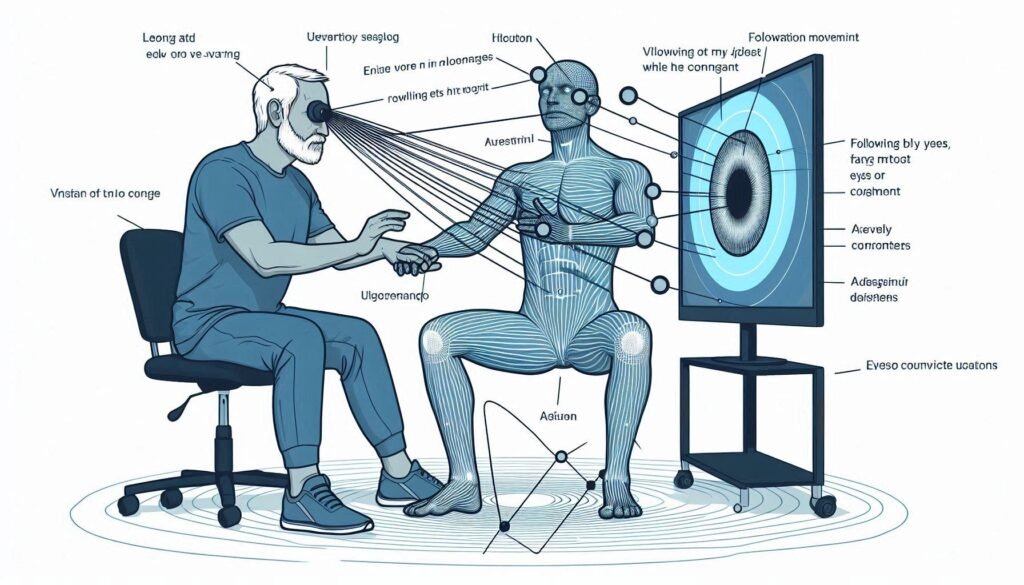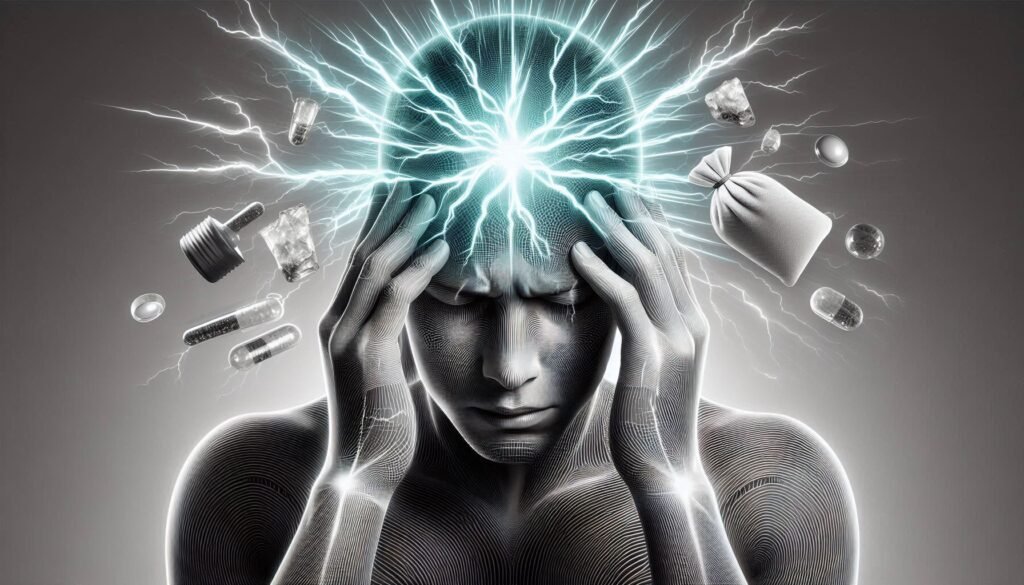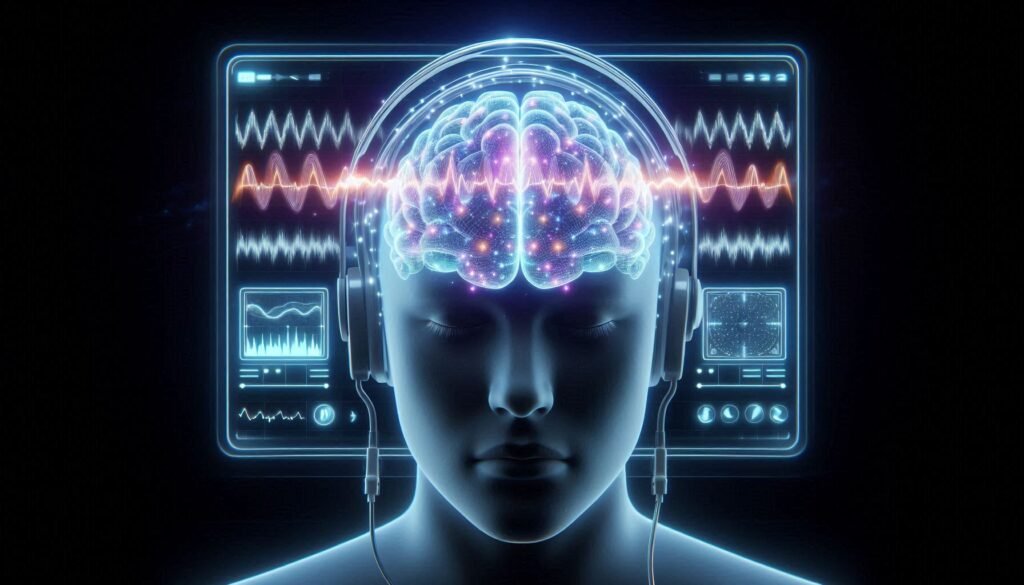Concussions are a growing concern in sports and daily life, with thousands of individuals affected each year. One critical aspect often overlooked during recovery is the Vestibulo-Ocular Reflex (VOR). This reflex plays an essential role in stabilizing our vision as we move, ensuring that what we see remains clear even when our head is in motion. For concussion patients, addressing VOR function can significantly impact their rehabilitation journey.
VOR training not only aids in reducing symptoms like dizziness but also enhances coordination and balance—key factors for returning to normal activities or sports safely. Understanding how to effectively incorporate VOR exercises into therapy can lead to improved outcomes. In this blog post, we’ll explore the importance of VOR training for concussion patients, outline assessment techniques, and provide practical exercise strategies tailored to enhance recovery. Whether you’re a healthcare professional or someone navigating post-concussion challenges, this guide will equip you with valuable insights into optimizing vestibular health through targeted training methods.

Understanding the Vestibulo-Ocular Reflex and Its Importance
The Vestibulo-Ocular Reflex (VOR) is a vital mechanism that helps maintain stable vision during head movements. By coordinating eye and head motions, it allows us to focus on objects while we move around. This reflex ensures our visual field remains clear, which is crucial for everyday activities like walking or driving.
In the context of concussions, VOR function can be significantly disrupted. Patients may experience blurry vision or difficulty tracking moving objects as their vestibular system struggles to adapt. Such impairments can lead to increased dizziness and balance issues, further complicating recovery.
Understanding VOR’s role becomes essential in rehabilitation after a concussion. Targeted training can help restore this reflex, improve visual acuity, and enhance overall stability. As patients progress through therapy, reestablishing VOR function not only alleviates symptoms but also boosts confidence in physical performance.
Recognizing the importance of VOR paves the way for effective assessment and tailored interventions aimed at optimizing recovery outcomes following a concussion injury.
Assessing VOR Function in Post-Concussion Patients
Assessing the Vestibulo-Ocular Reflex (VOR) in post-concussion patients is essential for determining their recovery trajectory. Clinicians typically use a combination of clinical tests and patient-reported symptoms to evaluate VOR function effectively.
One common method involves eye movement assessments while the head is moved quickly from side to side. Observing how well the eyes maintain focus on a stationary target helps identify any dysfunctions in reflex control.
Additionally, specialized equipment like video oculography may be employed for more precise measurements. This technology captures real-time eye movements, providing valuable data about VOR integrity.
Patient feedback plays a crucial role as well. Symptoms such as dizziness or difficulty focusing during head movements can indicate compromised VOR functionality, guiding treatment strategies tailored to each individual’s needs.
Basic VOR Exercises: Head Turns with Visual Fixation
Basic VOR exercises are essential for concussion patients recovering their vestibulo-ocular reflex function. One effective exercise involves head turns while maintaining visual fixation on a target. This simple yet powerful activity helps retrain the brain and eyes to work together effectively.
To begin, find a stable target at eye level, such as a sticker or an object on the wall. Stand about 3-5 feet away from it. Focus your gaze on this point before starting the movement. Slowly turn your head from side to side while keeping your eyes locked onto the target.
Start with gentle movements, gradually increasing speed and range as comfort allows. It’s crucial to perform these exercises in different environments for added challenge—try them in bright light or with distractions nearby.
Aim for sessions of 5-10 minutes daily, ensuring you take breaks if dizziness occurs. This foundational training is vital for restoring balance and coordination after a concussion, setting the stage for more advanced rehabilitation activities later on.
Progressing to Dynamic VOR Training with Moving Targets
Once patients show improvement with basic VOR exercises, it’s time to progress to dynamic training. This phase involves using moving targets to enhance the vestibulo-ocular reflex’s responsiveness and accuracy. The aim is to challenge the system further while maintaining visual fixation.
Dynamic VOR training can be implemented through various methods, such as tracking a moving object or engaging in sports-related drills. For example, tossing a ball back and forth while shifting head positions requires coordinated eye movements. These exercises simulate real-world situations where individuals need to adapt quickly.
Incorporating environmental distractions increases complexity and helps recreate scenarios faced during daily activities or sports. Patients learn how to manage their gaze stability despite changes in motion around them.
This progression not only aids recovery but also prepares concussion patients for functional challenges they might encounter post-injury. As they develop confidence in their abilities, it fosters a sense of normalcy, paving the way for better long-term outcomes.
Incorporating Balance Challenges into VOR Rehabilitation
Incorporating balance challenges into VOR rehabilitation is essential for enhancing recovery in concussion patients. The vestibulo-ocular reflex relies heavily on stable vision during head movements, and improving balance directly supports this function. By integrating exercises that challenge stability, patients can develop better coordination between their visual system and vestibular input.
Balance challenges can include standing on one leg or using unstable surfaces like balance boards. These activities encourage the brain to adapt and improve both proprioception and sensory integration. As patients progress, they can incorporate dynamic movements such as reaching or turning while maintaining their balance.
Moreover, these exercises help simulate real-life situations where sudden changes may occur during daily activities or sports. This prepares individuals for a return to normal life with reduced risk of falls or further injury.
Combining VOR training with balance tasks creates a comprehensive approach that addresses multiple aspects of post-concussion recovery and enhances overall functional ability.
VOR Adaptation Exercises for Specific Activities and Sports
VOR adaptation exercises are crucial for athletes recovering from concussions. These exercises help restore the brain’s ability to coordinate eye movements with head motion, which is essential for performance in sports. Tailoring VOR training to specific activities can enhance recovery and improve confidence.
For example, a basketball player might practice tracking a moving ball while performing rapid head turns. This simulates game scenarios where vision and spatial awareness are vital. Similarly, a soccer player could engage in drills that involve maintaining visual focus on teammates or targets during quick pivots.
Incorporating sport-specific movements allows athletes to transition back into their routines more seamlessly. It helps them regain the specific skills needed for their sport while ensuring safety throughout the rehabilitation process.
Additionally, these targeted exercises can boost reaction times and overall coordination. By focusing on relevant situations within each sport, patients feel better prepared when returning to play after an injury.
Technology-Assisted VOR Training: Virtual Reality Applications
Virtual reality (VR) technology is transforming vestibulo-ocular reflex (VOR) training for concussion patients. By immersing individuals in a 3D environment, VR provides an engaging platform to enhance VOR rehabilitation. Patients can practice eye and head coordination in dynamic settings, simulating real-world scenarios.
This innovative approach allows for controlled adjustments based on each patient’s progress. As they navigate virtual environments, clinicians can modify difficulty levels to challenge their abilities without overstressing them. This personalized experience fosters both motivation and adherence to therapy.
Additionally, the interactive nature of VR helps reduce anxiety often associated with traditional rehabilitation exercises. Patients feel more comfortable when immersed in stimulating visuals rather than monotonous routines.
Research shows that incorporating VR into VOR training leads to improved outcomes compared to conventional methods alone. With enhanced feedback mechanisms, patients can track their performance over time, ensuring a sense of accomplishment throughout their recovery journey.
Integrating VOR Exercises with Daily Activities
Integrating Vestibulo-Ocular Reflex (VOR) exercises into daily activities can significantly enhance recovery for concussion patients. Simple tasks like walking while maintaining visual focus on an object can help reinforce VOR function in a practical setting. This approach encourages the brain to adapt to movement and visual stimuli simultaneously.
Incorporate VOR training during routine chores, such as grocery shopping or cleaning. For instance, practice head turns while scanning shelves or looking around the room. These small adjustments add therapeutic value without overwhelming the patient.
Another effective method is pairing cognitive tasks with physical movements. Reading signs while walking outdoors not only engages vision but also challenges balance and coordination. It helps merge rehabilitation with everyday experiences seamlessly.
Consider using technology like smartphone apps that encourage tracking moving objects during common activities. Making VOR exercises part of daily life fosters consistency and promotes long-lasting improvements in function and confidence for those recovering from concussions.
Measuring Improvements in VOR Function During Rehabilitation
Measuring improvements in vestibulo-ocular reflex (VOR) function during rehabilitation is crucial for tracking progress. Clinicians often use various assessment tools to gauge changes over time. These assessments help tailor therapy approaches based on the individual’s needs.
One common method involves clinical tests, such as head impulse testing. This test evaluates how well the eyes stabilize while the head moves quickly in different directions. A noticeable improvement indicates that VOR training is effective and beneficial.
Another valuable approach includes video-oculography (VOG). This technology provides detailed insights into eye movements, allowing precise measurement of VOR gains. With these metrics, therapists can adjust exercise intensity and complexity accordingly.
Patient feedback also plays a significant role in assessing improvements. As individuals engage with their training routines, they often report decreased symptoms like dizziness or visual disturbances. Combining objective measurements with subjective experiences leads to a comprehensive understanding of each patient’s recovery journey.
Long-Term Management and Maintenance of VOR Function
Maintaining optimal vestibulo-ocular reflex (VOR) function is crucial for concussion patients long after their initial rehabilitation. Regular practice of VOR exercises can help reinforce the neural pathways that support balance and eye movement coordination. By incorporating these exercises into daily routines, patients can ensure continued improvement and adaptation.
It’s important to schedule periodic assessments with healthcare professionals who specialize in vestibular rehabilitation. These evaluations will track progress and identify any lingering deficits that may require further attention. Additionally, staying active through sports or activities that promote head movements can aid in sustaining VOR performance.
Educating oneself about the signs of potential VOR dysfunction is essential. Patients should remain vigilant for symptoms such as dizziness or visual disturbances during physical activity. Engaging in a supportive community—whether it’s through local workshops or online forums—can provide encouragement and motivation.
A proactive approach to managing VOR function post-concussion allows patients to regain confidence in their abilities and minimize risks associated with future head injuries. Embracing both exercise and education creates a comprehensive strategy for lasting health benefits related to vestibulo-ocular reflex training.


